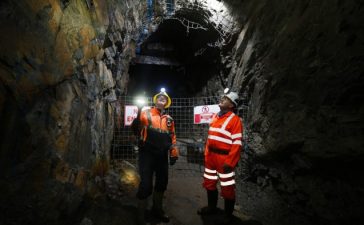Hairdressers, dry cleaners and fish and chip shops were among the independent retailers hardest hit by surging energy bills and a consumer spending squeeze last year, putting a dampener on growth for locally owned businesses during the pandemic.
Richard Lambert, the chief executive of the National Hair & Beauty Federation trade body said salons, which were often led by women and could be significant employers in deprived areas, needed more support with energy bills and on recruiting new staff.
“More salon businesses are making a loss, the trend of rising prices continues along with reliance on government support, uncertainty around survival and stagnant growth aspirations – so it’s no surprise we are seeing so many closures,” he said.
The increase in shop closures among salons and other categories including letting agents and fish and chip shops was offset by new openings led by beauty salons, convenience stores and takeaways, according to the latest report by analysts at the Local Data Company.
As a result, the overall number of independent retailers across the UK remained almost flat year on year in 2022, with about 260 fewer vacancies, compared with a net 2,157 more stores trading in 2021.
The steady number of independents contributed to an overall 57% slowdown in new vacancies on the UK’s high streets, retail parks and shopping centres, as dining, retail and leisure chains bounced back from the pandemic. The net rate of closures – the gap between new openings and businesses shutting their doors – fell to the lowest rate since 2016.
Lucy Stainton, the commercial director at LDC, said: “While overall market performance has improved, independent businesses have started to feel the pinch as the impact of the cost of living crisis is felt across the market. Soaring energy costs, combined with the lower levels of disposable income for consumers, have led to some independent businesses falling into trouble and closing their doors for good. Government packages designed to support small businesses to recover post-Covid have recently come to an end, causing additional pressures.”
Stainton said new store openings remained strong despite the tough economic conditions. “This stream of new independent businesses reflects the growing appetite for landlords to let space to independent businesses, especially in locations not typically occupied by this type of business, such as shopping centres.”
After a strong period during the pandemic, high streets saw the greatest increase in vacancies, while retail parks fared the best and shopping centres recovered after a very tricky period at the height of the pandemic.
General merchandise stores, which are overwhelmingly made up of clothing and fashion chain outlets, continued to close, with a net decline of almost 2,400 – but that was down from almost 4,700 in 2021.
after newsletter promotion
Redevelopment of retail sites, meanwhile, reached a new high – at 10,739 compared with 9,139 in 2021 and 7,307 in 2019 – before the pandemic. LDC found that a fifth of Debenhams stores, which were closed in 2021 after the department store went into administration, have been repurposed while almost half – 48.5% – remain empty.
The difficulty in filling department store buildings is highlighted by the fact that 11.4% of BHS buildings are still empty seven years after that business collapsed, with 12% repurposed and the rest filled by alternative retailers.











